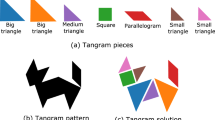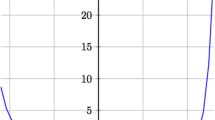Abstract
Imagine a huge (in theory, infinite) space, whose elements are called components. We say that we have a configuration, if for every component we have specified its state. All components have one and the same finite set \(M\) of possible states and one of the elements of \(M\) is called zero. If all the components of a configuration are zeros, we call it “all zeros”. We are especially interested in those configurations, in which only a bounded set of components are in a state different from zero; such a configuration is called an island. Our time is discrete and we may imagine that, due to the forces of nature, at every time step the whole configuration (landscape) is subject to a deterministic uniform local rule \(D\) such that non-zero components may appear only in the vicinity of already existing non-zero components (like in percolation or contact processes). We say that an operator \(D\) erodes an island \(x\) if there is a natural \(t\) such that \(x D^t =\) “all zeros”, that is \(t\) iterative applications of \(D\) turn \(x\) into “all zeros”. We call \(D\) an eroder if it erodes all islands. We look for an algorithm which decides for any \(D\) whether it is an eroder or not and does it make islands grow or not. In general this problem is algorithmically unsolvable, so we need to restrict our scope; in addition to the afore-mentioned conditions we assume that \(D\) is monotonic. Studying such processes one has to decide whether time and space are discrete or continuous and in this study we choose discrete time and continuous space just because this case is underrepresented in the literature. But especially important is the set of possible states of every single component. Years ago one of us (A. Toom) presented a rule to decide whether \(D\) is an eroder for the case when every component has only two possible states. A. Toom also showed that if \(D\) is an eroder, then it erodes any island in time, which is linear in the diameter of the island. In this work every component has three possible states. It turned out that the difference between two and three states, which may seem trivial, in fact leads to a qualitative difference: in the three-states case an eroder may take non-linear time to reach “all zeros”. Also, unlike two-state case, in the three-state case we have, in addition to eroders, to introduce degraders which reduce any island to an island where states of all components take only two possible values. Our main results are stated as three theorems. Theorem 1 gives sufficient (but regretfully not necessary) conditions for a linear degrader and an eroder. Theorems 2 and 3 concentrate on the case when \(D\) needs a non-linear time to erode an island—a case impossible if states of components take only two values. In addition, Theorem 3 presents a sufficient condition for islands to grow.



Similar content being viewed by others
References
Galperin, G.A.: One-dimensional automaton networks with monotonic local interaction. Probl. Inf. Transm. 12(4), 74–87 (1975)
Galperin, G.A.: Homogeneous local monotone operators with memory. Sov. Math. Dokl. 228, 277–280 (1976)
Galperin, G.A.: Rates of interaction in one-dimensional networks. Probl. Inf. Transm. 13(1), 73–81 (1977)
Lima de Menezes, M., Toom, A.: A non-linear eroder in presence of one-sided noise. Braz. J. Probab. Stat. 20(1), 1–12 (2006)
Petri, N.: Unsolvability of the recognition problem for annihilating iterative networks. Sel. Math. Sov. 6, 354–363 (1987)
Kurdyumov, G.L.: An algorithm-theoretic method for the study of homogeneous random networks. Adv. Probab. 6, 471–504 (1980)
Toom, A., Mityushin, L.: Two results regarding non-computability for univariate cellular automata. Probl. Inf. Transm. 12(2), 135–140 (1976)
Toom, A.: Algorithmical unsolvability of the ergodicity problem for locally interacting processes with continuous time. J. Stat. Phys. 98(1/2), 495–501 (2000)
Toom, A.: Algorithmical unsolvability of the ergodicity problem for binary cellular automata. Markov Process. Relat. Fields 6(4), 569–577 (2000)
Rockafellar, R.T.: Convex Analysis. Princeton University Press, New Jersey (1970)
Toom, A.: Stable and attractive trajectories in multicomponent systems. Multicomponent random systems. In: Dobrushin, R., and Sinai, Ya. (eds.) Advances in Probability and Related Topics, vol. 6, pp. 549–576. Dekker, New York (1980)
Liggett, T.M.: Interacting Particle Systems. Springer, New York (1985)
Liggett, T.M.: Stochastic Interacting Systems: Contact, Voter and Exclusion processes. Springer-Verlag, Berlin (1999)
Liggett, T.M.: Continuous Time Markov Processes. American Mathematical Society, Providence (2010)
L. H. de Santana. Velocities a la Galperin in Continuous Spaces. Ph.D. Thesis. Federal University of Pernambuco, Department of Mathematics, Recife, Pernambuco, Brazil, July 2012. http://www.toomandre.com/alunos/doutorado/luis/tese-luis.pdf
Toom, A.: Monotonic binary cellular automata. Probl. Inf. Transm. 12(1), 33–37 (1976)
Toom, A.: Monotonic Evolutions in Real Spaces. In: Dobrushin, R., Kryukov, V., Toom, A. (eds.) Locally Interacting Systems and Their Application in Biology. Lecture Notes in Mathematics, vol. 653, pp. 1–14, Springer, New York (1978)
Toom, A.: On critical values for some random processes with local interaction in \({\mathbb{R}}^2\). In: Sidoravicius, V. (ed.) In and Out of Equilibrium, vol. 51, pp. 309–319, Birkhäuser, Boston (2002)
Acknowledgments
L. H. de Santana, A. D. Ramos and A. Toom thank CNPq-Brazil for the financial support. A. D. Ramos was also supported by CAPES, process BEX 2176/13-0. Further, A. D. Ramos thanks the Mathematics Department of University of Utah for kind hospitality during his visit.
Author information
Authors and Affiliations
Corresponding author
Rights and permissions
About this article
Cite this article
de Santana, L.H., Ramos, A.D. & Toom, A. Eroders on a Plane with Three States at a Point. Part I: Deterministic. J Stat Phys 159, 1175–1195 (2015). https://doi.org/10.1007/s10955-015-1226-9
Received:
Accepted:
Published:
Issue Date:
DOI: https://doi.org/10.1007/s10955-015-1226-9




